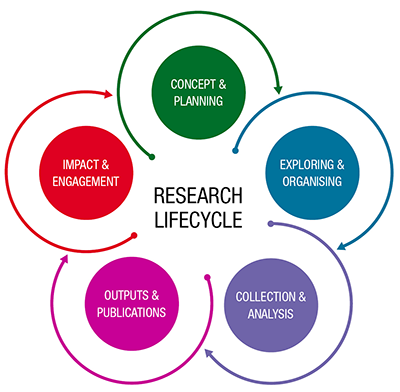At the CNR in Rome, a new way to build an aware community on Stargardt
Intervening on rare diseases, such as Stargardt, by making sufferers protagonists to promote research. The “bottom up” approach can be done, and the Association “Ti Accompagno” proved it by applying the training-intervention methodology.
The proof was at the CNR in the context of the meeting organized at the authoritative research institute in which, as part of the “TACO” project, a project activated with the support of a grant granted by BIC Lazio and through the application of the participatory methodology (followed since its inception by Renato Di Gregorio, president of the Institute on training-intervention), it was precisely those affected by Stargardt’s disease who dialogued with researchers, professors and doctors.
During the meeting, the second public one after the first one at Sapienza University in Rome, the method used and the results achieved were discussed, hopes were raised, and a new community of purpose was built where sufferers become aware that they themselves have to nurture research and that together they constitute a “community of practice” that welcomes, protects and teaches all those affected and who often encounter this disease in the very delicate age of adolescence.
Stargardt is a genetic disorder, listed in the catalog of “rare” diseases , which affects the eyes and severely limits visual ability manifesting mainly in the age group of 15 to 30 years old. Diagnosis at ophthalmologists is neither immediate nor easy, and arrangements for living with it, containing the exacerbation of symptoms, are often the result of individual and solitary research.
The Ti Accompagno Association, with this project, has made two important things concrete: it has created a website (www.uselastargardt.it) conceived as “a virtual plaza” in which to gather the experiences of all sufferers and has stimulated the establishment of a community of sufferers who meet, recognize each other, empower each other, and exchange important information about the support tools to be used and the activities each person is able to do despite the disease.
The meeting was also attended by Donato Di Pierro who is one of the most active members of this community who, for the occasion, brought to the participants a book of his, just published, about a walking tour of Italy entitled: “On the Road with Stargardt”.
It is this new community that now prompts research but also provides it with the basic condition for developing.
Riccardo Pozzo, director of the Department of Human and Social Sciences, Cultural Heritage of the CNR in Rome, who hosted the event and spoke bringing his greetings, emphasized this very point: “Research is fed by data; if the Stargardt patient community feeds the information it has to the scientific community and urges it to find solutions to contain the disease if not actually eradicate it, progress will certainly be made. Our Department,” Pozzo continued, “is very interested in your methodological approach to the disease, that of making patients and their families protagonists, ‘in common’ in a project of improvement for the whole society. To get results you have to move on your own feet you have to seek out, meet and engage with researchers and submit to them the invaluable data in your possession that form the essential basis of any research “.
The same thesis is that of Professor Benedetto Falsini, a specialist working at Policlinico Gemelli in Rome, who has long been engaged in important research on the disease. At the conference Falsini, who is about to join the Staragardt research group in which he himself is involved in the U.S. was represented by Dr. Giorgio Placidi, assistant orthoptist in ophthalmology. “Follow-up examinations,” added Placidi – are complex and annoying and can discourage patients from continuing to undergo them, but this is the only way to study the disease and try to combat its effects, if not actually its causes.”.
And SMART research, as reported last October 16 at the “SMART” fair in Bologna in which the Association participated, is moving precisely in this direction: collecting data, making them “open” and integrable, so as to derive diagnoses and predictive indications more quickly.
Fortunately, the world of Associations is also becoming more active, even gaining increasing recognition from the Ministry of Health.
In fact, Dr. Marta De Santis of the Center for Rare Diseases of the Istituto Superiore della Sanità has invited everyone to take part in the upcoming Open Day scheduled in Rome for December 10, organized to allow associations to meet with representatives of the Consiglio Superiore and propose observations that may go to implement the National Plan on Rare Diseases. “As a center,” De Santis emphasized, “we consider patients to be important partners, and this is especially true with regard to rare diseases. In recent years, the concept of empowerment has become more and more established in the health field as well, so much so that patient academies are being formed. Our aim is just that: to collaborate with patients and researchers in order to improve quality of life.”.
The chairwoman of the Ti Accompagno Association, Dr. Maria Ausilia Mancini, before presenting the progress achieved on the development of the website, which is already being fed by contributions from patients and Associations interested in the topic, read the very welcome letter of encouragement for the activity being conducted delivered by the Undersecretary for Health of the Government Vito Se Filippo.
Mancini wanted to emphasize the importance of the establishment of a real and substantial community that now feels the desire to meet and talk to the world, and the very site noielastargardt.it offers them the sounding board. Thus, the tool itself is, on the one hand, a useful tool for intercepting sufferers (so as to measure the phenomenon), and on the other hand, a means of connecting those interested in and studying about Stargardt and all people with the same disease, or otherwise with visual impairment, who are pleased to share experiences and solutions.
The closing of the conference was left to the real protagonists: the patients. Five of them took the speakers’ stage and began making concrete proposals. They addressed the eyewear manufacturers, arguing that much progress can be made in this regard, thus also tapping into a broad segment of users (the elderly for example) who, while not involved in the world of Stargardt, still have visual difficulties.
They then turned to the world of Ergonomics urging the SIE (Italian Society of Ergonomics) to deal with mobility-related communication (the panels in stations, at bus stops, in subways) gaining a commitment to do research on the subject and to carry out a specific project in the next Master’s program for Ergonomists to be held in Bologna, starting in November, with the direct involvement of the sick.
Their commitment and leadership was rewarded with a symbolically precious object. Mancini presented them with an art object forged by an artist from Piombino (Livorno province) representing the TACO project logo, an enameled iron owl; an animal that sees even at night.
The next meeting of the “TACO” project is scheduled for early December and will be a technical meeting in which the Stargardt Community aims to meet researchers and also learn about the news coming from America.


